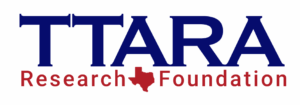Appraisal cap made little impact on taxpayers: Cap on some property appraisals helped feed higher tax rates
FOR IMMEDIATE RELEASE
Sept. 9, 2025
Appraisal cap made little impact on taxpayers
Cap on some property appraisals helped feed higher tax rates.
(AUSTIN) — A state limit on the appraised values of some Texas properties led to higher county tax rates and higher countywide property tax levies in 2024, according to a new study.
The study from the TTARA Research Foundation (TTARA Foundation) and Rice University’s Baker Institute for Public Policy looked at how central appraisal districts (CADs) in five Texas counties applied a 2023 law limiting assessed tax value increases to 20% over the prior year. The new law applied only to non-homestead properties valued at $5 million or less beginning in 2024.
The Texas Legislature passed this new limit into law in 2023 as part of Senate Bill 2. A constitutional amendment authorizing the limit was approved by voters in November 2023. The 2023 law and its constitutional authorization will expire at the end of 2026.
“This new appraisal cap produced mixed results,” said TTARA Research Foundation President Jennifer Rabb. “In the counties we studied, property tax rates and overall property tax levies were actually higher due to the new cap. While a relative handful of properties had savings, total county property taxes were higher than they would have been without the cap. This study shows that an appraisal cap is not an effective way to reduce property taxes in Texas.”
The report found that in 2024 within the five counties that the report studied:
- The cap removed $4.2 billion in property value from the tax rolls of the school districts, cities, counties and special purpose districts within the counties. This was only 0.4% of the total taxable value that would have been on the rolls if the 20% cap were not in place.
- The cap led to higher tax rates in every county studied. State law allows taxing units to maintain constant revenue by raising rates when total taxable value decreases, whether the taxable value decrease results from market forces or appraisal caps. The cap resulted in slight increases in the no-new-revenue tax rate (NNRTR) and voter-approval tax rate (VATR) in each county. The cap also resulted in higher adopted tax rates than would have been needed to raise the same amount of tax revenue if the cap had not existed.
- The increase in county property tax levies on non-capped properties slightly outweighed the decrease in county property tax levies on capped properties, demonstrating that the cap resulted in a property tax increase overall in each county. The cap also resulted in a small tax increase on the median home value, including homesteads, in each county.
- The appraisal districts applied the cap inconsistently, sometimes removing too little value from the tax rolls, and sometimes removing too much. In some cases, the CADs applied the cap to properties that appear to be ineligible for it.
“This study confirms the general consensus that appraisal caps are inefficient and inequitable,” said John W. Diamond, Director of the Center for Tax and Budget Policy and Kelly Fellow in Public Finance at Rice University’s Baker Institute. “While appraisal caps may reduce property taxes for a small share of taxpayers, they result in a tax increase on properties not impacted by the cap if revenues are maintained at the initial level and lead to unequal treatment of similar properties.”
The report, “The Surprising Impact of the 20% Appraisal Cap in Texas,” examined the tax rolls and rates in five counties: Collin, Harris, Midland, Moore, and Smith counties. It used 2023 and 2024 certified appraisal rolls obtained from the Texas Comptroller of Public Accounts, excluding any supplemental rolls.
The full report can be found here.
For more information, please contact:
Jason Embry: Jason@NewWestComms.com, 512-560-3876
– ## –
The TTARA Research Foundation is a 501(c)(3) nonprofit organization that provides nonpartisan, data-driven insights that inform sound fiscal policy in Texas. Our research and education support a transparent and sustainable approach to fiscal policy and governance that affects all Texans. Originally formed as the Texas Research League in 1950, the Foundation was created to address a pressing need for independent, factual analysis of the state’s complex tax and budget systems—a need that is even more urgent today. The Foundation also works to identify best practices among the 50 states to improve government efficiency and fiscal restraint in Texas. The Texas Research League was renamed the TTARA Research Foundation in 1995.
